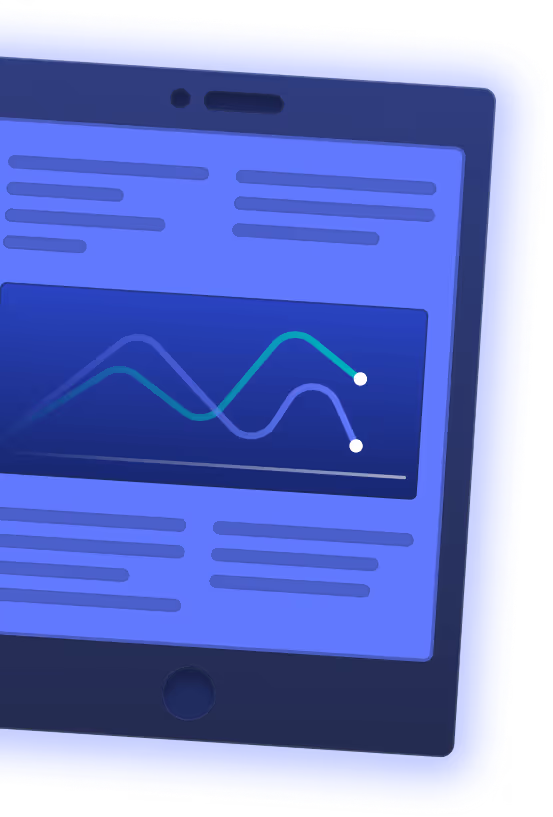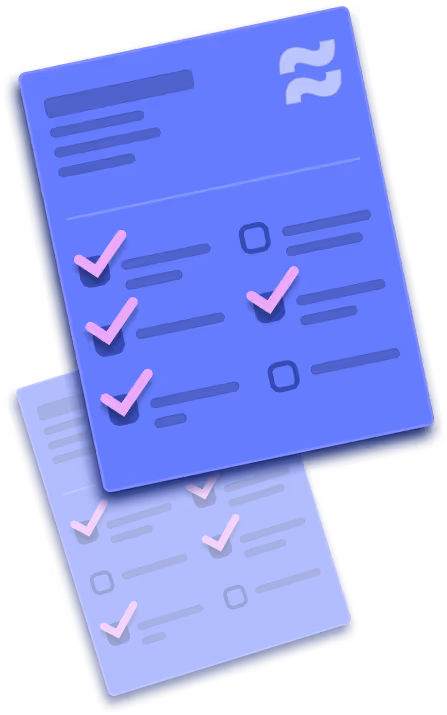
Drupal 7 to Webflow: Why Migrate to Webflow after Drupal 7 EOL
Key takeaways
- Drupal 7 is no longer supported, creating security, performance, and compatibility risks.
- Upgrading to Drupal 10 is a full rebuild and often more complex than switching platforms.
- Webflow offers an easier, modern alternative with built-in hosting, security, and visual development.
- Migration requires rebuilding the site in Webflow and manually importing content but results in a faster, easier-to-manage site.
- Webflow isn’t ideal for small personal sites or large, complex e-commerce stores.
With Drupal 7 reaching its end of life, many businesses and website owners face a critical decision: continue with the complex process of upgrading to Drupal 10 or explore alternative platforms that offer a more streamlined and modern approach to web development.
In this blog, we’ll explore why migrating from Drupal 7 to Webflow can be a game-changer, offering a fresh start with a powerful CMS that keeps up with modern web standards and evolving business needs.
{{cta}}
What Is Drupal 7 End of Life and Why Do I Need to Migrate?
Drupal 7 End of Life (EOL) refers to the official discontinuation of support for Drupal 7 by the Drupal community. Originally slated for November 2021 but extended multiple times, the final EOL date marks the end of all security updates, bug fixes, and community support for Drupal 7. This means that any website still running on Drupal 7 will no longer receive critical updates, leaving it vulnerable to security threats, performance issues, and compatibility problems.
Why Is This a Problem for Drupal 7 Users?
- Security vulnerabilities: Without regular security updates, Drupal 7 websites become prime targets for hackers, putting sensitive data and site integrity at risk. Staying on an unsupported platform exposes your site to potential exploits that could compromise user information, disrupt services, and damage your brand's reputation.
- Lack of bug fixes and support: After EOL, no further bug fixes or patches will be issued, meaning that any new issues that arise will go unaddressed. This can lead to a gradual degradation of your site’s functionality, creating an unstable and unreliable user experience.
- Compatibility issues: As web technologies continue to evolve, older versions of CMS platforms like Drupal 7 will become increasingly incompatible with new browsers, server environments, and third-party integrations. This can result in broken features, slower performance, and a diminished user experience.
- Increased maintenance costs: Post-EOL, maintaining a Drupal 7 site will become increasingly costly, as any required fixes or updates will need to be handled by specialized developers. This can quickly escalate your maintenance budget, making it financially unsustainable to stay on Drupal 7.
Given these challenges, migrating away from Drupal 7 is not just recommended—it’s essential for maintaining a secure, functional, and future-proof website.
Drupal 7 do Drupal 10: How Complex Is the Migration?
For most people with a Drupal 7 CMS, the most logical choice is to migrate to Drupal 10.
However, migrating from Drupal 7 to Drupal 10 is not a simple upgrade—it’s essentially a complete rebuild that can be as challenging as moving to any other CMS platform.
As highlighted in community discussions, the migration can take anywhere from 300+ hours, depending on the complexity of your site, the need for custom development, and the intricacies of maintaining existing data and layouts. For larger, more complex sites, this process becomes even more daunting due to Drupal’s inherently complex architecture.
The transition involves rethinking the entire site structure, managing data connections, and often redesigning the site entirely to meet modern standards and expectations.
This significant time and resource investment is why many businesses are using Drupal 7's end of life (EOL) as an opportunity to consider alternative CMS platforms. Suppose you’ve found Drupal’s steep learning curve, high maintenance, or development costs to be a burden. In that case, this is a prime moment to explore other options that offer the user-friendliness and flexibility that Drupal may lack.
Given the complexity of upgrading within the Drupal ecosystem, it may make more sense to migrate to a platform that better fits your needs, offering a more streamlined approach to content management, easier maintenance, and potentially lower costs.
Why Migrate to Webflow after Drupal 7 End Of Life
Migrating from Drupal 7 to Webflow offers an opportunity to modernize your website with a platform that’s designed for today’s digital needs.
While Drupal 7’s end of life signals the end of updates, security patches, and support, it also provides a perfect moment to reassess your CMS strategy.
Here’s why Webflow is an excellent choice for those looking to move beyond Drupal 7:
- Ease of use and visual development: Webflow’s intuitive drag-and-drop interface makes it accessible to designers, marketers, and non-technical users alike. Unlike Drupal, which requires significant coding and development knowledge, Webflow empowers you to design and launch complex, visually stunning websites.
- All-in-one platform: Webflow combines design, development, CMS, and hosting into a single platform. This eliminates the need for multiple plugins, third-party integrations, and extensive backend management, which are often required with Drupal.
- Built-in security and performance: Webflow provides automatic security updates, SSL certificates, and blazing-fast hosting, ensuring your site is always secure and performs optimally. You won’t have to worry about managing updates or security patches manually, as Webflow takes care of these crucial aspects for you.
- Modern CMS capabilities: Webflow’s CMS is built for today’s content needs, offering advanced features like custom content types, collections, and flexible content management. It’s designed to be user-friendly and adaptable, making it easy to create and manage dynamic content without complex configuration.
- Enhanced design flexibility: Webflow provides complete control over your site’s design, allowing for pixel-perfect layouts and advanced animations that can be difficult to achieve in Drupal. Its visual approach to web design lets you experiment and iterate quickly.
- SEO and marketing tools built-in: Webflow comes equipped with built-in SEO tools, such as customizable meta tags, alt text, and automatic sitemaps, ensuring your site is optimized for search engines. Additionally, integrating marketing tools like Google Analytics, Facebook Pixel, and more is straightforward, helping you track performance and improve user engagement.
- Lower total cost of ownership: By consolidating design, development, and hosting, Webflow can significantly reduce the total cost of ownership compared to Drupal. You won’t need to hire specialized developers for maintenance, saving both time and money in the long run.
How to Migrate to Webflow from Drupal 7
Migrating from Drupal 7 to Webflow is not a simple data transfer but a complete redesign and reconfiguration of your website on a new platform. This is something you’ll have to do no matter which CMS you decide to migrate to — even if it’s Drupal 10.
This process involves rebuilding your site’s layout using Webflow’s visual editor and manually migrating your content. Here’s a step-by-step outline to guide you through the migration:
- Audit your existing Drupal site: Start by conducting a thorough audit of your current Drupal 7 website. Identify all the pages, content types, media files, and functionalities that need to be replicated in Webflow. This will help you plan your new site’s structure and ensure nothing important is left behind.
- Plan your new site structure: Design your site’s structure in Webflow based on your audit. This includes setting up your navigation, deciding on content hierarchy, and determining which Webflow CMS Collections you’ll need to organize your content effectively.
- Design your website in Webflow: Use Webflow’s builder to recreate your website’s design. You can either replicate the existing design of your Drupal site or take this opportunity to update and modernize the look and feel. Customize the layout, typography, and visuals using Webflow’s design tools, adding animations and interactions as needed.
- Set up Webflow CMS collections: Create CMS Collections in Webflow that match the content types you need (e.g., blog posts, portfolio items, products). Set up custom fields to match the data structure of your Drupal content, ensuring all necessary data points are accommodated.
- Manually migrate your content: Export your content from Drupal 7 and manually import it into Webflow’s CMS. This step involves copying text, uploading images, and filling out the relevant fields in your Webflow Collections. For large amounts of content, Webflow’s CSV import feature can help speed up the process, but it’s important to check this
- Configure SEO and integrations: Set up SEO settings for each page, including meta titles, descriptions, and alt texts. Integrate any marketing tools you were using on your Drupal site, such as Google Analytics, CRM systems, or marketing platforms.
- Test your new site thoroughly: Before launching, test your site on Webflow to ensure all links work, content is correctly formatted, and everything functions as expected. Check across multiple devices to confirm that your design is responsive.
- Launch your new Webflow site: Once testing is complete, connect your domain to Webflow’s hosting and publish your new site. Monitor the site post-launch for any issues, and make adjustments as needed.
Migrating from Drupal 7 to Webflow involves careful planning and manual work, but the result is a modern, visually stunning website that’s easier to manage and update. Taking the time to redesign and migrate correctly ensures your new site will be optimized for the future.
When NOT to Migrate to Webflow
While Webflow offers a powerful blend of design, development, and CMS features, it’s not the ideal choice for every type of website. Here are some scenarios where Webflow might not be the best fit:
- Small sites and personal projects: For personal blogs, portfolios, or micro-business sites, Webflow’s cost and features might be overkill. These types of sites often have simple requirements that don’t necessitate Webflow’s robust design and CMS capabilities. In such cases, WordPress can be a more cost-effective solution, offering ample customizability and a wide range of free and affordable plugins suitable for smaller-scale projects.
- Sites needing advanced e-commerce capabilities: Although Webflow offers e-commerce functionality, it is still evolving compared to more established e-commerce platforms. Webflow works well for small stores, particularly those selling digital products, subscriptions, or a limited inventory. However, larger stores with complex product variations, extensive catalogs, or sophisticated logistics and integrations may find Webflow’s e-commerce capabilities limiting. Businesses needing advanced features like multi-currency support, comprehensive shipping options, or complex inventory management might be better served by platforms like Shopify or WooCommerce.
Thinking of Migrating from Drupal 7 to Webflow?
Migrating from Drupal 7 presents a unique opportunity to rethink your website’s future, especially with the platform’s end of life on the horizon. While Drupal has served many businesses well with its flexibility and scalability, the complexities of maintaining an outdated system can outweigh the benefits.
Webflow offers a modern, intuitive, and all-in-one solution that empowers teams to take control of their design, content, and site management without the need for deep technical expertise.
Considering Your Next Move? Schedule a Consultation with Flow Ninja.
At Flow Ninja, we specialize in migrating and building sites in Webflow. Schedule a consultation with our team to explore whether Webflow is the right platform for your migration from Drupal 7.
{{cta}}
FAQ for Drupal 7 to Webflow
What are the key differences between Webflow and Drupal in terms of user roles and permissions?
Drupal offers granular user role and permission controls, ideal for large teams with complex editorial workflows. Webflow's user permissions are more limited, focusing on basic collaborator and editor roles, which suits smaller teams with simpler requirements.
Can I automate any part of the Drupal 7 to Webflow content migration process?
Some content migration can be automated using CSV exports from Drupal and imports into Webflow CMS collections. However, layout and design elements must be rebuilt manually using Webflow's visual editor, and each entry should be reviewed for accuracy.
How does Webflow's CMS handle multilingual content compared to Drupal?
Drupal natively supports multilingual content, offering advanced localization features. Webflow lacks full native multilingual support, requiring workarounds such as third-party integrations like Weglot or duplicating pages manually for different languages.
Are there SEO limitations when switching from Drupal 7 to Webflow?
Webflow includes built-in SEO tools like meta tag editing and sitemap generation. However, advanced SEO configurations available in Drupal may require third-party tools or manual setups in Webflow to match the same level of control and customization.
What costs should I consider when migrating from Drupal 7 to Webflow?
Consider costs such as Webflow subscription plans, potential design and development services, manual content migration time, and optional integration tools. While Webflow reduces ongoing maintenance costs, initial migration may require a moderate upfront investment.
How scalable is Webflow for enterprise-level websites coming from Drupal?
Webflow can support high-traffic and content-rich websites but has limits on CMS items and user roles. For enterprises, it may require creative structuring or using Webflow Enterprise plans with custom scaling options and enhanced support.
What training is needed for teams transitioning from Drupal to Webflow?
Teams familiar with Drupal’s backend may need training in Webflow’s visual design tools, CMS structure, and editor workflows. Platforms like Webflow University offer free tutorials, making it easier for non-technical users to adapt quickly.






.svg)





.webp)


-min.png)
-min.png)





.png)

.png)
.png)








.svg)

.png)
.png)
.webp)
.svg)

